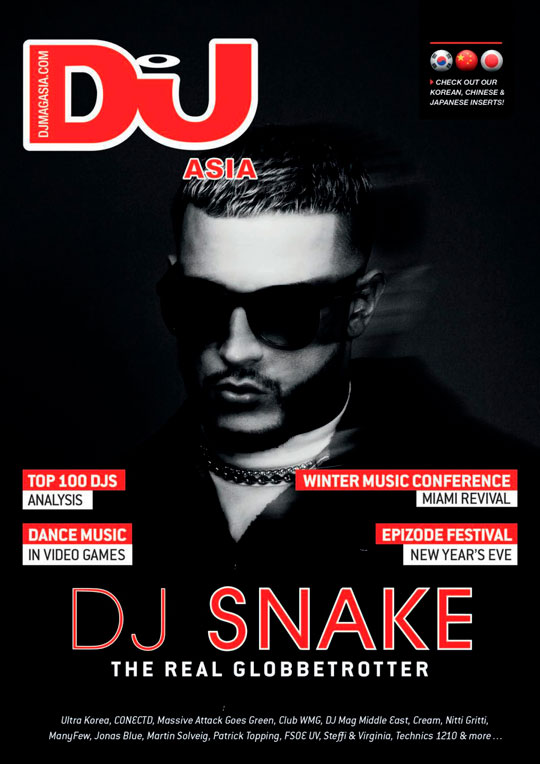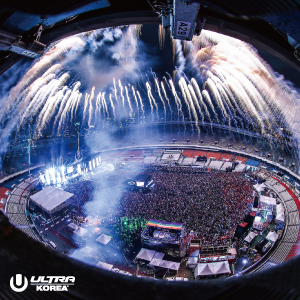English

Dance Music in Video Games
Artists today showcase new music through games, put on live in-game performances, and do many more things via games that we would’ve never dreamt of in the past. Here, we bring you the four masterpieces that delivers some of the greatest music in video game history.
Words: KEVIN KANG
It was when the huge “Marshmello” logo flashed on the screens in Pleasant Park, the mysterious super star DJ Marshmello appeared on stage. Boasting massive hologram dancers and colorful lighting, the colossal event on that day set a new record as 10.7 million people witnessed the show. That’s more than the entire population of Seoul city, which the city’s government last estimated to have 10.17 million people. If you were scratching your head trying to figure out how millions would fit in a single park, rest assured. In fact, the show was hosted in a virtual world of Fortnite, a popular online video game that has become a global phenomenon. Over the past few decades, video games have gone through numerous changes, eventually seeping deeper into our lives as well as music. Artists today showcase new music through games, put on live in-game performances, and do many more things via games that we would’ve never dreamt of in the past. Here, we bring you the four masterpieces that delivers some of the greatest music in video game history.
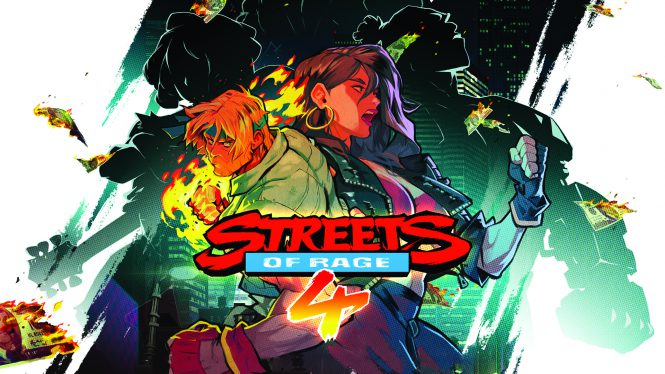
Streets of Rage Series
The game that defined the beat ‘em up genre
The ‘80s and ‘90s, which could arguably be called the golden era of video games, has seen the rise of various new genres. The crème de la crème, however, is the beat ’em up games. Beat ’em ups take place in scrolling levels, and usually features combat between the protagonist and a large number of opponents. But even among Technos Japan’s Double Dragon, Capcom’s Final Fight, and all the other beat ‘em up masterpieces of the ‘80s and ‘90s, there is one in particular that holds a special place in our hearts. And that game is the Streets of Rage series. The game spawned two sequels in the ‘90s, and centers on the story of three ex-cops fighting against the evil mastermind Mr. X, who is the boss of a crime syndicate that runs the city. Three main characters of the original Streets of Rage—Adam, Axel, and Blaze—quit the force to rid the city from the rule of mobsters. In addition to bare knuckle combat, players can also fight with drainpipes, knives, and many other weapons that they pick up from the streets.
From vivid characters to next level combat, the Streets of Rage series were probably why some of us ‘80s and ‘90s kids slipped out of classes in school. Aside from its aesthetics, the game’s mind-blowing soundtrack left an indelible mark in the history of video games. The soundtracks were created with the hardware of Sega Genesis, and boasts an eclectic blend of house, techno, and trance that transcend the boundaries of video game music at the time. The Yamaha FM chips inside the hardware allowed music producers to save low bitrate samples up to 16mb. What’s interesting is that this technical limitation led to the creation of a unique, “crunchier” sound—the nostalgic sound which instantly sends one on a trip down memory lane.
It would be an understatement to say that the soundtracks of this game take club music of the time to another level. Created by musicians Yuzo Koshiro and Motohiro Kawashima, the soundtracks match perfectly with the game’s diverse stages, one that ranges from the street outside the Pine Pot store all the way to the hallway leading to Mr. X’s office.
Koshiro once said in an interview that while developing Streets of Rage, he was deeply into electronic music, most notably house and techno. And it was this love that encouraged him to introduce dance music to video games. The musician also revealed that he tried to reference the percussive sounds and timbres of Roland rhythm machines to recreate the sound of club music. Laden with TR-808 and 909-ish sounds resonating in every corner of the game, the soundtracks are reminiscent of the early days of acid house at the Hacienda as well as Detroit techno giants such as Derrick May and Juan Atkins. Upon its release, the game’s soundtracks instantly charmed the world, earning the titles “the best video game music” and “the sound ahead of its time”. Koshiro, who also produced the soundtracks of Shinobi, Castlevania, Sonic, and many more, is currently touring around the world with Kawashima to perform live sets of Streets of Rage soundtracks in large-scale festivals including Sónar and Red Bull Music Festival.
There have been countless attempts to create another sequel of the legendary game that defined the beat ‘em up genre. While most of them didn’t see the light of day, a team of French game developers called DotEmu finally continued the legacy last September by releasing the next sequel—Streets of Rage 4–in 25 years. The game gathered serious attention before its release, and it was the first entry in the series to adopt animated graphics. Numerous giants of the video game music industry including Koshiro produced the music, gracing us with another exceptional soundtrack of the game. If Throwback Thursday isn’t too passé for you, how about celebrating it with a game of Streets of Rage?
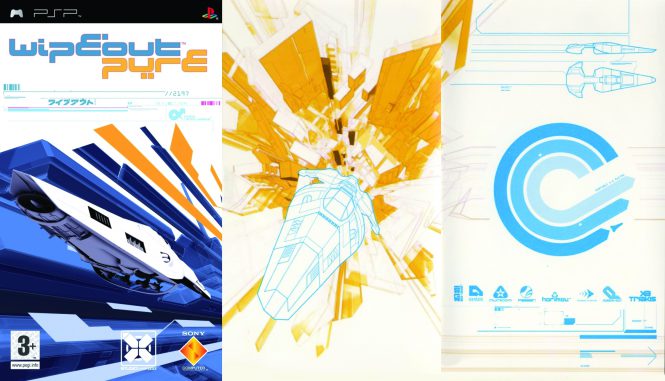
Wip3out
A futuristic anti-gravity race fueled by driving techno music
It could be said that the 90s kids had “early education” to club music through video games. The introduction of CD technology allowed numerous types of dance music to enter the sphere of video games. Along with the aforementioned Streets of Rage series, Wipeout is another game that contributed to the adoption of dance music in video game soundtracks. The game was developed by Psygnosis(later owned by Sony), a video game developer based in Liverpool, England. Boasting a futuristic design, Wip3out takes place in the future where players control anti-gravity ships and use weapons to shoot down their contenders in the race.
Like Streets of Rage, Wipeout is also widely known for its phenomenal soundtracks. With the CD technology, various artists from a non-engineer background could create music for games without having to understand any programming techniques—thanks to which the soundtracks of Wipeout features a wide range of talented artists; vigorous techno productions of composer Tim Wright (a.k.a. CoLD SToRAGE), as well as numbers from some of the UK’s finest artists including The Chemical Brothers and Orbital all shines through in the futuristic atmosphere of the game. The soundtracks were a huge hit and have been released via CD and vinyl in 1996.
The unique aesthetics and soundtracks brought huge success to the franchise, and in an attempt to differentiate their product from Nintendo, their biggest competitor in the market, Sony launched a promotional campaign to associate Wipeout with club culture. From the package designed to resemble dance music LPs to installing Wipeout booths in clubs, the game quickly became a go-to post club activity for many club-going, music-buying audience. The commercial success of the game also opened the doors for licensed music, starting an era where artists could promote their music through video games.
Wipeout Omega, a remastered edition of the previous two titles in the series, was released in 2017. The game features enhanced graphics and stunning soundtracks produced by an A-list team of artists including the likes of Boys Noize, Knife Party, and The Prodigy. If the cold winter days have got you down, a thrilling anti-gravity race might be just what you need.
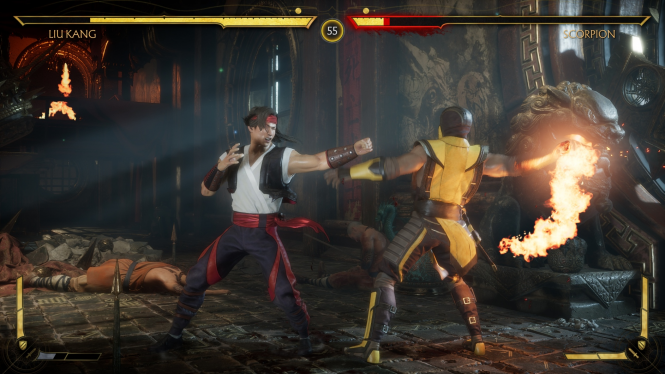
Mortal Kombat
Not for the faint-hearted!
Besides the classic gems mentioned above, there is another game that I highly recommend you play if you’re a fan of dance music. And it is the Mortal Kombat series. Developed by Midway Games’ Chicago studio, the game became one of the most successful franchise in the history of fighting games and it also spawned a movie, animated TV series, comic book series, and a card game. Mortal Kombat takes place in a fictional universe where warriors fight over the fate of their realm. In line with its universe consisted of multiple realms, players can choose characters of various races including humans, demons, aliens, and even cyborgs. In its sequel, players can also play with DC villains including Harley Quinn and Joker; as well as choose from other iconic pop culture characters such as Alien, Predator, Terminator, and more. And if that wasn’t enough, the game released a Sub-Zero skin of Dimitri Vegas, the winner of 2019 DJ Mag Top 100 DJs, captivating legions of EDM fans across the globe.
As you’ve already noticed from the Dimitri Vegas skin, Mortal Kombat is another game that has been deeply associated with dance music. After the game’s release, a techno band who goes by the name The Immortals produced an album in the theme of the game. The album features theme songs for each character along with the iconic soundtrack ‘Techno Syndrome’, which a lot of people remember for the “Mortal Kombat!” scream. Another soundtrack album was dropped in 2011 to celebrate the ninth installment in the series, and Skrillex produced the heavy-hitting banger ‘Reptile’s Theme’ for the game’s character Reptile. Aside from Skrillex, other big names including Tokimonsta, Felix Cartal, and 9th Wonder participated in the album titled ‘Mortal Kombat: Songs Inspired by the Warriors’.
Released in the early ‘90s, Mortal Kombat is also known for its graphics. The game’s developers adopted motion capture technology, which allowed them to create a game far more immersive and realistic than its counterparts.
But before you get into the game, I must warn you: this game incorporates fierce and gruesome fighting. Blood splatters everywhere, and its easy to see your character behead the opponents. On top of that, there’s also something called the fatality system, which allows the player to brutally finish off their opponents with low health. From Joker handing his opponent an exploding cake to Arnold Schwarzenegger blowing his enemy into pieces with his shotgun, there are some seriously bizarre ways to finish your opponents—which is one of the main factors behind the game’s popularity. You can find fatality compilation videos on Youtube, and in case you’re wondering, there’s also fatalities of Dimitri Vegas. Of course, the game’s violence became an issue, and it contributed to the creation of ESRB, an age and content rating system for video games in America. If you’re not immune to movies like Tarantino’s ‘Kill Bill’, maybe this is not the game for you.
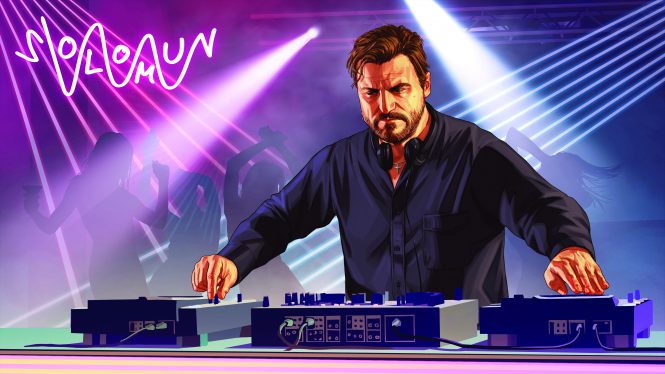
GTA 5
The game we all know and love
The game we all know and love
It was another day at the LSX, the international airport located at the Southern end of Los Santos. Dave, a promoter for the newly opened club downtown, was waiting outside to pick up DJ Solomun, the headliner of the day’s show. Just as when everything was going so well, he receives an urgent phone call from Solomun saying that his pilot passed out. Panicking, Dave shouted over the phone, “Solly! Get up there and do something…push some buttons! That’s what you do for a living!” Solomun takes the controls, attempting for the first time in his life to land a plane. What seems like a sequence from an action movie is actually a scene from GTA 5 Online’s ‘After Hours’ update.
Thanks to the myriad of games that surfaced alongside advancements in technology, video games became a platform where artists could promote and showcase new music. Club culture, too, has often been associated with video games, spreading out across the world. Amongst all the games, I want to introduce GTA 5 Online, which released an update that gives the players a chance to run a club in-game. Set in a crime-filled city of Los Santos, the main goal of the game is to climb up the ladders of crime by building your reputation through all sorts of illegal activities. However, the open world system of the game sets it apart from its counterparts as players are no longer confined to the guidelines or quests and are free to enjoy the game in their own way.
Through the ‘After Hours’ update, players can purchase clubs in various locations of the city and hire world-famous DJs to play at their club. (The club is actually a front for other criminal enterprises, but hey—its GTA) What’s interesting is the details of the game: players can embellish the interiors, hang out with celebrities in the VIP zone, and show off some dance moves which changes to the beat. Rockstar Games, the developer of the franchise, has also casted real-life DJs for the game. GTA 5 ‘After Hours’ feature four superstar DJs—Solomun, Tale of Us, The Black Madonna, Dixon—and they all rock the crowd with their stellar performances on stage. Using motion capture technology, the DJs in the game connect with the audience, and turn the knobs on the mixer like they would in reality. Solomun has also released a music video created with the game titled ‘Customer is King’, and Tale of Us released new tracks via the game.
Aside from running the club, GTA allows players to listen to various kinds of music via its in-game radio station. Players can cruise through the city while bopping their head to producer Flying Lotus’ Flylo FM, Gilles Peterson’s Worldwide FM, and many more. The ‘After Hours’ update also added a new station titled Los Santos Underground, which features DJ sets of four DJs. Sick and tired of your day-to-day life? How about a trip to Los Santos?
March 31st, 2020



